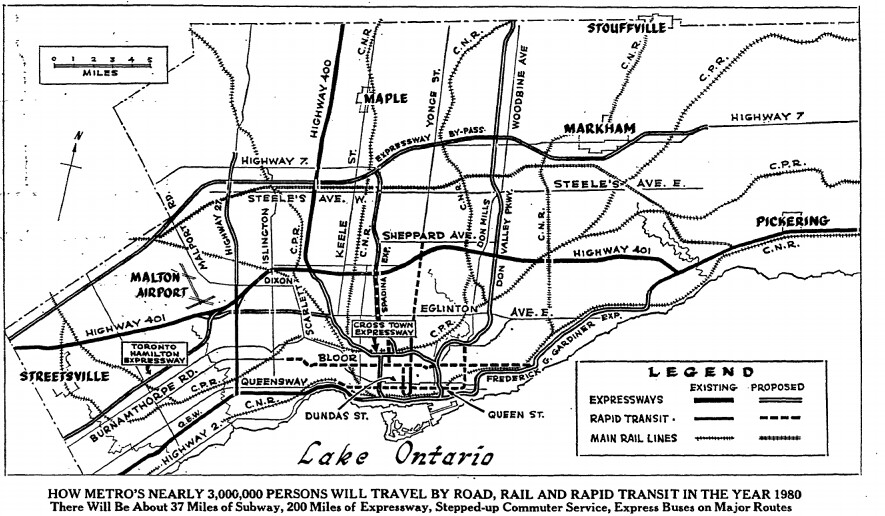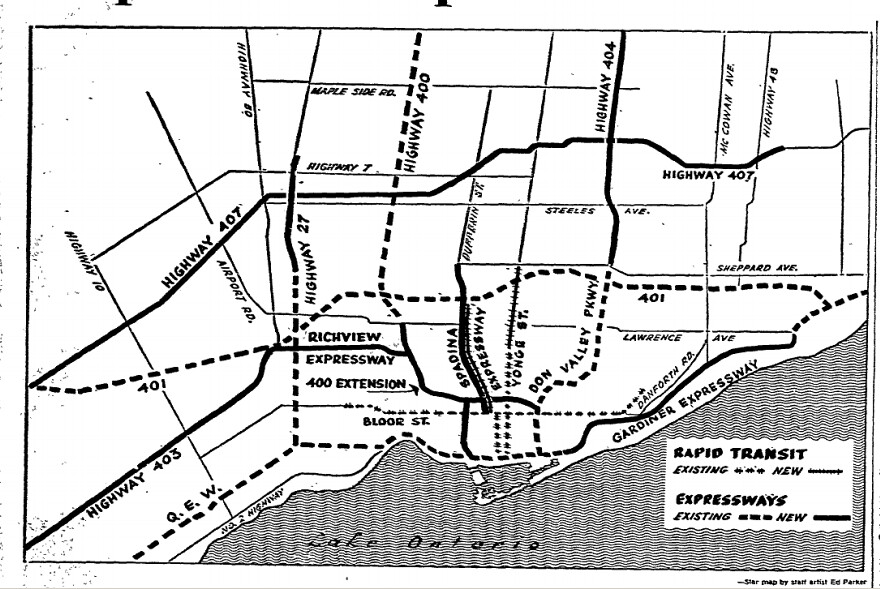SimonP
Active Member
Thanks for the fixes. It should make more mention of the Spadina extension, I'll do some more reading to try to find out exactly how it was that Downsview station ended up getting built.


Makes me wonder if in 30 years people will be wondering why the underground train on Eglinton uses different vehicles and an entirely different track gauge than every other transit line in the city.
Don't need to wait 30 years. I wonder that right now. There can't possibly be a huge expense making wheels further apart. It makes no sense that with a large subway network and a large street-car network at TTC gauge that there wouldn't be a benefit to building the Eglinton LRT to the same gauge.
Makes me wonder if in 30 years people will be wondering why the underground train on Eglinton uses different vehicles and an entirely different track gauge than every other transit line in the city.
It's quite possible that the Eglinton LRT and a B-D extension to STC will be the only two projects that will come from this round of transit funding. And in that case, yes I agree with you, that Eglinton will be viewed 30 years from now much the way the SRT is today (ie "why is it different than everything else?").
The SRT is unique in drawing scorn because it's so damn short. Unique technology for a few clicks and a handful of stops. Eglinton will not be viewed that way at all....even if it's just the currently planned tunnel that gets built.
For the record, I think the problem with the Scarborough RT lies in the fact that it appears to be designed to be as unappealing as possible, rather than the trains look different. Granted on heavy snow days things change, but for the other 350 days of the year it is far from a pleasure to ride...
This thread is an example of why I don't think we should cut and run from Transit City, because we've been doing that for the past half century and look where that has got us! Most of these plans all have fairly common themes, but every political change the new administration feels the need to "reinvent the wheel" and we end up with next to nil. How many more decades must we let history repeat itself before we finally learn our lesson?
For the record, I think the problem with the Scarborough RT lies in the fact that it appears to be designed to be as unappealing as possible, rather than the trains look different. Granted on heavy snow days things change, but for the other 350 days of the year it is far from a pleasure to ride...
This thread is an example of why I don't think we should cut and run from Transit City, because we've been doing that for the past half century and look where that has got us! Most of these plans all have fairly common themes, but every political change the new administration feels the need to "reinvent the wheel" and we end up with next to nil. How many more decades must we let history repeat itself before we finally learn our lesson?
Shouldn't that advice apply to Miller too?
The reason we don't have a politically palatable (across the board) plan is because Miller decided that ideology (must redevelop "priority neighbourhoods" with transit) took priority over planning continuity. He didn't just tweak the existing plan. He threw Network 2011 out the window. And then decided that the place to leave his ideological mark was by starting on Sheppard first. Heck, he even ignored the need for a DRL. That's how much he was biased towards LRT.
Network 2011 was dead more than a decade before Miller was elected. It was killed when Peterson's Liberals refused to fund it in 1990.
2011 was first proposed in 1985, Transit City came about in 2007. In those 22 years much had changed with the city, and it was clearly time for a new plan.




